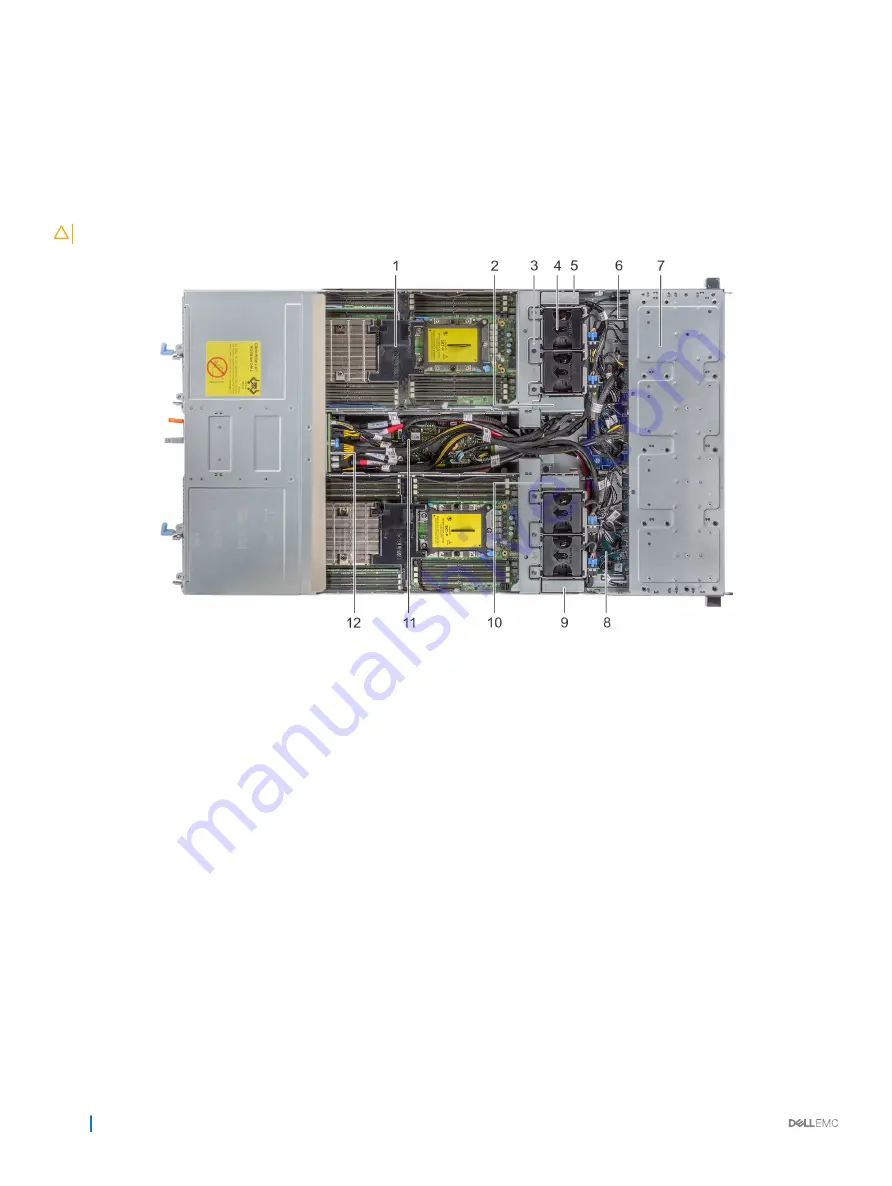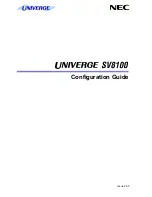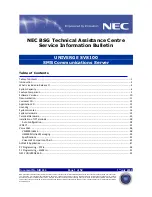
•
#4 nut driver
•
Torx #T30 screwdriver
•
Wrist grounding strap
•
ESD mat
Inside the enclosure
CAUTION:
This system must be operated with the system cover installed to ensure proper cooling.
Figure 10. Inside the C6400 enclosure
1
sled (4)
2
right midplane
3
fan cage (2)
4
fan (4)
5
right linking board
6
backplane
7
drive cage
8
expander board
9
left midplane
10
left linking board
11
chassis management board
12
power interposer board
62
Installing and removing system components
Summary of Contents for EMC PowerEdge C6420
Page 1: ...Dell EMC PowerEdge C6420 Regulatory Model E43S Series Regulatory Type E43S001 ...
Page 8: ...Figure 1 Supported configurations for PowerEdge C6420 8 PowerEdge C6420 overview ...
Page 64: ...Figure 12 Removing a sled 64 Installing and removing system components ...
Page 66: ...Figure 14 Installing a sled 66 Installing and removing system components ...
















































